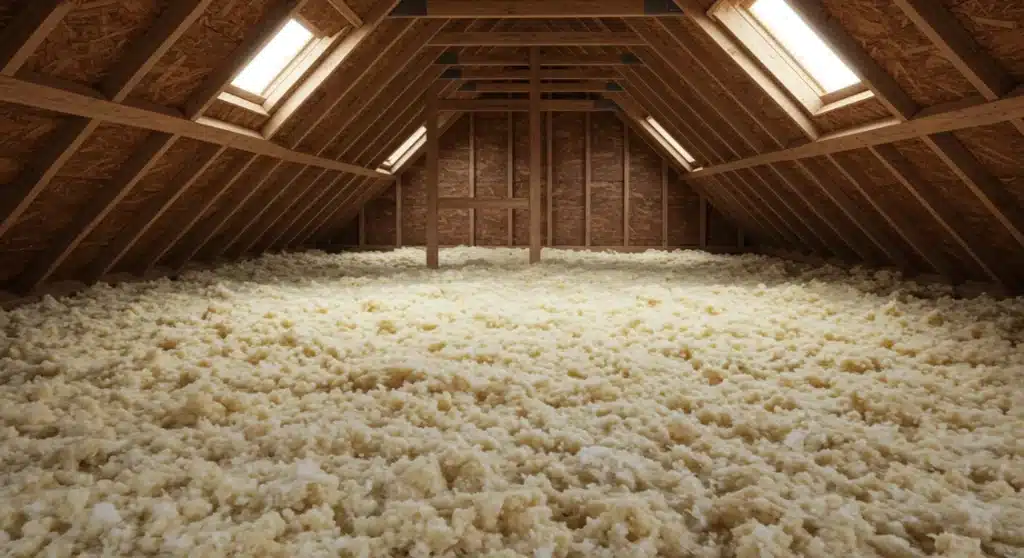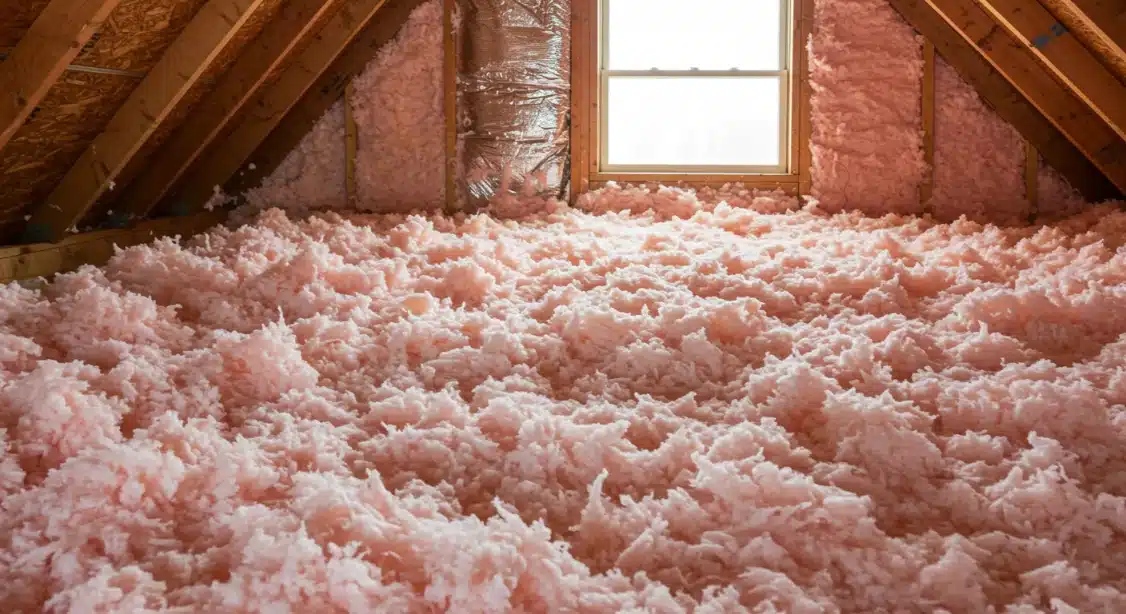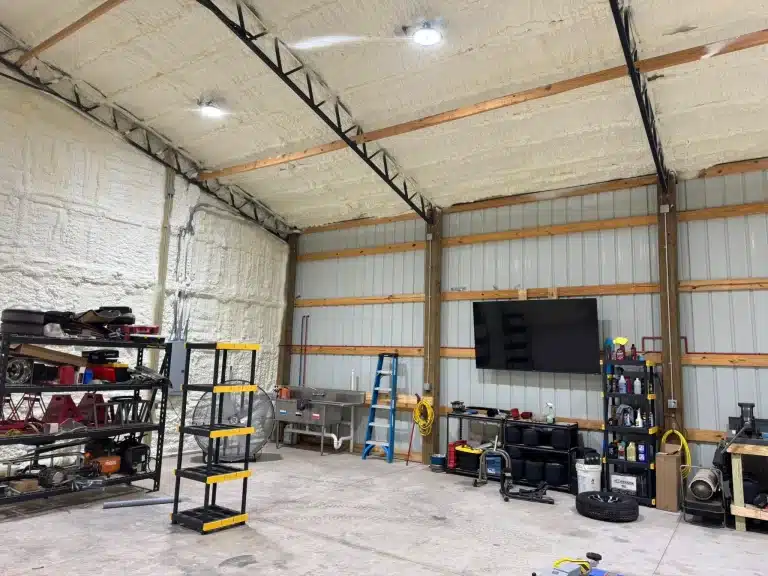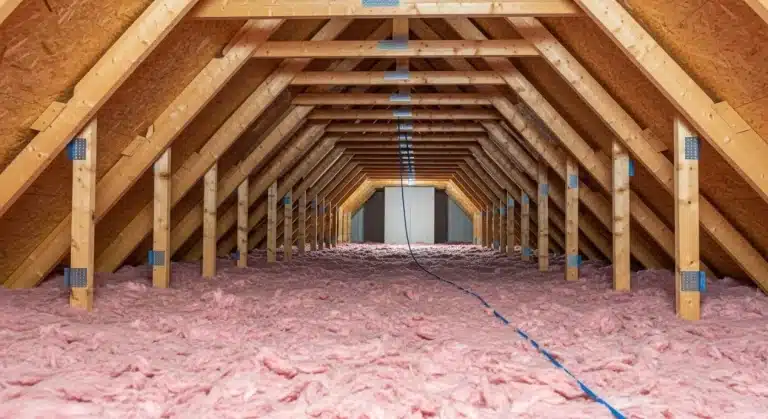Blown-in insulation provides the greatest return in areas where heat transfer is highest and air leaks are common. Attics, walls, and floors over crawl spaces benefit the most. These sections typically suffer from poor sealing or degraded insulation, which results in energy loss.
Homes in humid regions like Florida face higher risks of moisture buildup, making blown-in insulation a strong option because it fills gaps tightly and helps maintain indoor temperature stability. Its ability to reach irregular cavities and prevent thermal bridging makes it an effective choice for both retrofits and new builds.
This guide details the areas where blown-in insulation performs best, with practical data, material comparisons, and region-specific advice based on hands-on installation experience.
Primary Areas That Benefit From Blown-In Insulation
| Area | Benefit | Installation Considerations | Suitable for Retrofitting? |
|---|---|---|---|
| Attic (Unfinished or Vented) | Reduces upward heat loss; lowers HVAC load | Deep fill improves R-value, seals gaps well | Yes |
| Exterior Walls | Enhances thermal barrier and soundproofing | Dense-pack method required; access holes needed | Yes |
| Floors Over Crawl Spaces | Prevents cold floor transfer; moisture buffer | Vapor barrier may be needed; limited access | Yes |
| Garage Ceilings/Bonus Rooms | Stabilizes temp in rooms above/adjacent | Dense fill needed; must isolate electricals | Yes |
| Knee Walls | Seals vulnerable framing pockets | Use mesh netting for containment | Yes |
Types of Blown-In Insulation Compared
| Type | Material | R-Value per Inch | Moisture Resistance | Fire Resistance | Settling Rate | Cost per Sq Ft (avg) |
|---|---|---|---|---|---|---|
| Cellulose | Recycled paper | 3.2 – 3.8 | Moderate | Treated for fire | Moderate | $0.60 – $1.00 |
| Fiberglass | Glass fibers | 2.2 – 2.9 | High | Non-combustible | Low | $0.50 – $0.95 |
| Mineral Wool (Loose) | Basalt/slag wool | 3.0 – 3.3 | High | High | Low | $1.00 – $1.50 |
Bonus Tip: For attics in humid climates, fiberglass performs better over time due to lower moisture absorption and reduced mold risk.
Technical Performance Data
| Metric | Cellulose | Fiberglass | Mineral Wool |
|---|---|---|---|
| Air Infiltration Reduction (%) | 22 – 30 | 15 – 22 | 20 – 25 |
| Mold Growth Resistance (1-5) | 2.5 | 4.0 | 4.5 |
| Installation Time (1000 sq ft) | 3–4 hours | 2–3 hours | 3–5 hours |
| Typical R-38 Thickness (inches) | 10.5 – 12 | 13 – 15 | 11 – 13 |
(Source: U.S. Department of Energy, 2024; Building Science Corporation)
Things to Consider Before Making a Decision
- Existing Insulation Condition: Blown-in insulation works well over existing materials if they’re dry and undamaged.
- Air Sealing: Areas should be sealed before installation to prevent warm air leakage.
- Climate Zone: Hot-humid zones (like Florida) benefit more from fiberglass or mineral wool due to mold resistance.
- Access Points: Wall cavities may need drilling; attic hatches should be insulated post-installation.
Bonus Tip: In older homes, request a blower door test before installation to locate primary air leaks and target insulation more effectively.

Services Most Relevant to This Topic
Prestige Insulation Solutions offers services that align with the key areas where blown-in insulation is most effective:
- Blown-In Insulation: Used to insulate attics, wall cavities, and hard-to-reach areas.
- Insulation Removal: Safely removes old or contaminated insulation before installing new material.
- Roof Insulation: Adds thermal protection directly under roofing decks for unvented spaces.
- Residential Insulation: Full-home solutions for energy efficiency in existing homes.
Common Questions
Can blown-in insulation be added over old insulation?
Yes, if the existing insulation is dry and free from mold or pests. Removal is advised if there’s damage.
Does blown-in insulation settle over time?
Yes. Cellulose settles more than fiberglass or mineral wool, which maintain coverage better long-term.
How long does installation take?
Most attic projects under 1,500 sq ft take 3–5 hours with professional equipment.
Is blown-in insulation fireproof?
Fiberglass and mineral wool are naturally fire-resistant. Cellulose is treated but still more flammable.
Will blown-in insulation reduce noise?
Yes. It fills cavities completely, reducing airborne sound between walls and floors.
Get Expert Insulation Guidance
For practical answers based on real-world experience, contact Prestige Insulation Solutions. Get the facts and options that fit your home, climate, and goals.
Phone: (850) 429-4969 Email: [email protected]
FAQ
How often should blown-in insulation be inspected?
Every 3–5 years, or after a roofing issue, pest problem, or major weather event.
What is the average lifespan of blown-in insulation?
Fiberglass and mineral wool can last 30–50 years. Cellulose typically lasts 20–30 years with proper maintenance.
Can blown-in insulation be used in new builds?
Yes. It’s effective in new construction, especially when paired with air sealing and vent control.
Is DIY installation recommended?
Not for full attic or wall systems. Proper density and coverage require commercial equipment and experience.
Does it impact home resale value?
Yes. Improved energy efficiency and comfort are attractive to buyers, particularly in energy-conscious markets.






